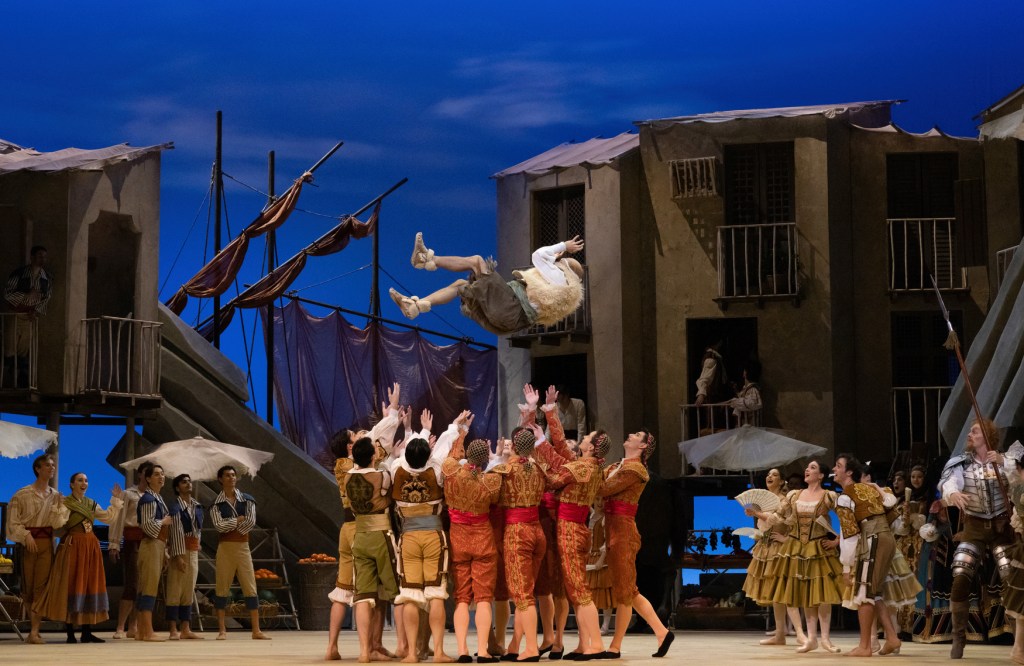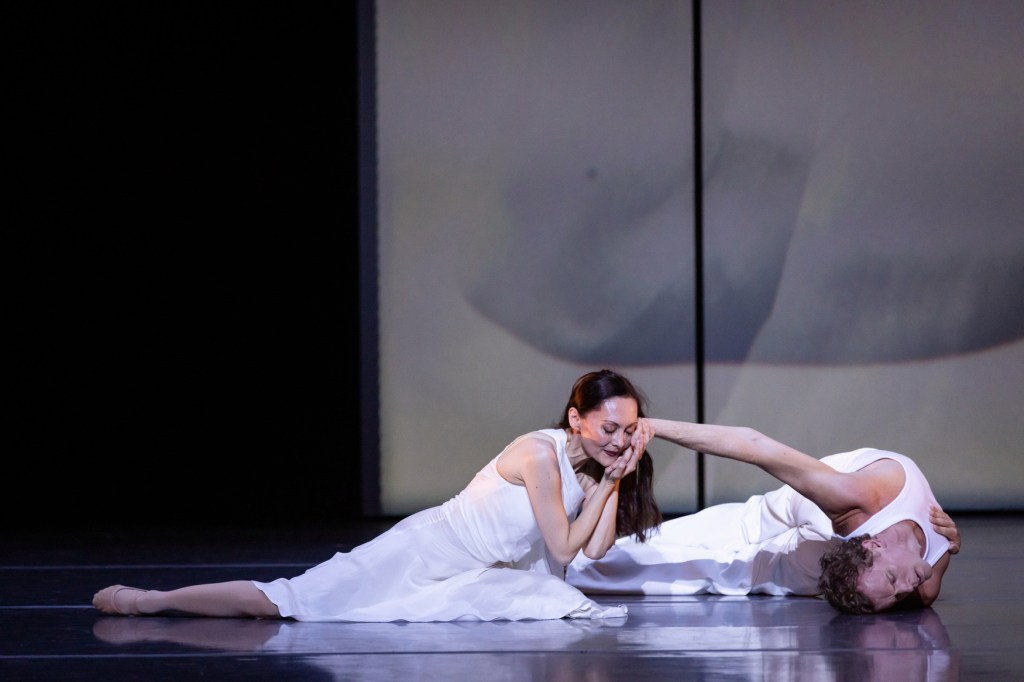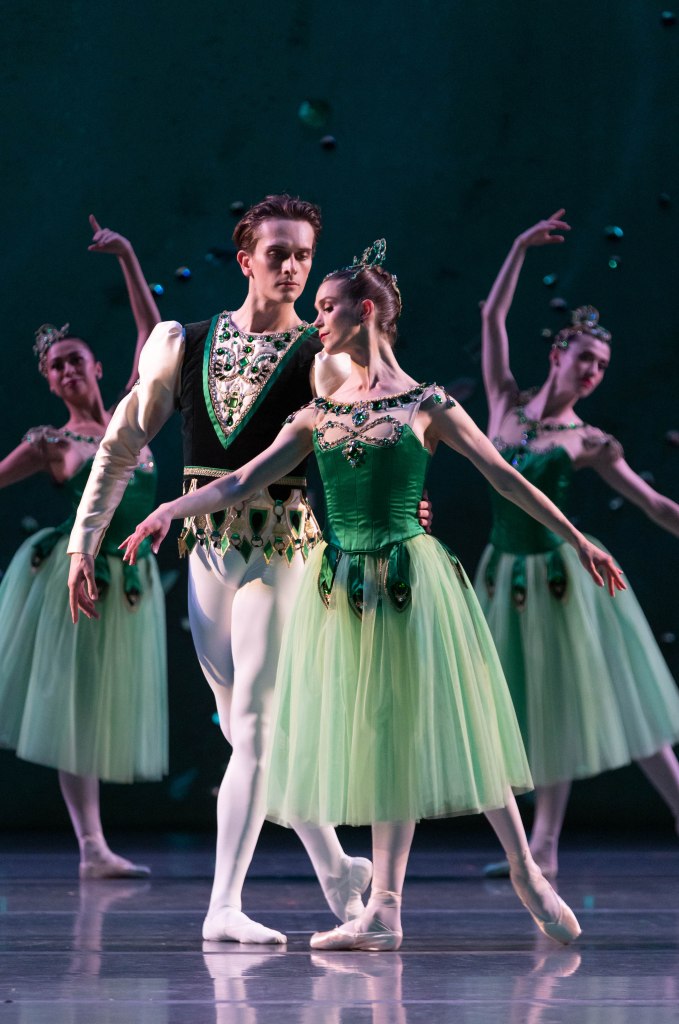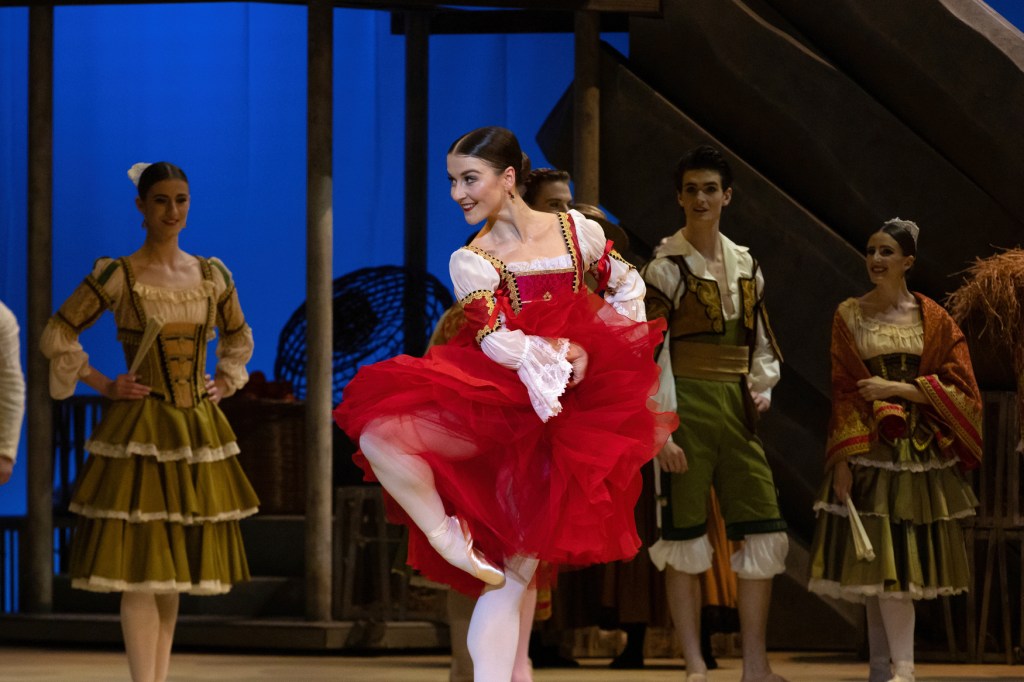The way The Australian Ballet’s calendar works meant Sydney had a unique opportunity to assess the company’s form and direction at the halfway point of its 60th anniversary celebration year.
The ballets came thick and fast in the harbour city. After opening in Melbourne – TAB’s home base – in March, Don Quixote moved on to Sydney in April, to be followed promptly by a new double bill, Identity, presented in repertory with the company premiere of George Balanchine’s Jewels. This is quite rare scheduling for TAB and in Melbourne, where Identity and Jewels go next, the programs will run consecutively.
So, Don Q, then Identity, and then Jewels, the last two opening within two days of each other (May 2 and May 4). The juxtaposition was striking.

Jewels, created for New York City Ballet in 1967, is one of those works that lets a company judge its standing in the international sphere. Indeed it’s the work TAB takes to London in August for its first international tour under David Hallberg’s artistic directorship. True, the choice of Jewels happened by default when the originally advertised Kunstkamer became kryptonite due to choreographer Marco Goecke’s unorthodox way of confronting a critic who didn’t like his work, but Jewels could never be considered a second-best choice on the world stage.
Identity was, as its name suggests, designed specifically for this place and time; to say more and different things about the company than is possible for Don Q and Jewels to do. Taken together the two halves of Identity, Daniel Riley’s THE HUM and Alice Topp’s Paragon, spoke to TAB’s history, its future, its goals and its Australianness, starting with the choice of these choreographers. Topp, the company’s resident choreographer, is a woman in a field where female dance-makers are still very much in the minority. Riley is a First Nations man who is artistic director of the nation’s oldest contemporary dance company, Australian Dance Theatre.
Hallberg was signalling loudly that ballet in the 21st century is and should be a broader church than you might think. The embrace extended to former TAB luminaries, who were seamlessly incorporated into the large Paragon cast. In THE HUM, Riley’s ADT ensemble appeared alongside TAB company members. Both works had major new scores commissioned from Australian composers.

It was quite the statement even if, despite the resources pumped into them, it’s highly probable neither work will have a life after the upcoming Melbourne season of Identity. Paragon is the very definition of an occasional piece and THE HUM needs the schedules of two companies to align. But you never know. Perhaps an Adelaide season of THE HUM – ADT is based in that city – would be a possibility. It really would be a shame not to give Deborah Cheetham Fraillon’s richly coloured, highly dramatic score another outing and you can say the same for Christopher Gordon’s plush, romantic, nostalgia-drenched Paragon music. It’s no small thing to commission scores of this length – each is about 50 minutes – for dance.
Topp’s living scrapbook had loads of heart, too much over-complicated partnering, too fragmented a structure and moments of great joy as the likes of former principal artists Madeleine Eastoe, Lucinda Dunn, Kirsty Martin and Rachel Rawlins and Fiona Tonkin radiated timeless artistry. Archival photographs were projected, present TAB dancers partnered former stars and flickers of beloved repertoire sparked precious memories.

THE HUM was all about the theatre as sacred ground on which dancers, musicians, designers and the audience share profound experiences available only when all are present together. Some of Riley’s choreography felt unfocused but the engagement was there, driven by Cheetham Fraillon’s thrilling score and Matthew Adey’s knockout design, full of mystery and wonder.
Even if neither work entirely fulfilled its promise the evening was an important one, as was the company premiere of Jewels just 48 hours later. Here the promise was fulfilled.
Balanchine’s necklace of three gorgeous ballets inspired by precious stones put the sword to the understanding that a three-act ballet must have a narrative. In Jewels the only story is the one individual viewers create for themselves from worlds of mood, atmosphere, and suggestion. Emeralds is, if you like, a walk in a mysterious, enchanted forest to the gentle sounds of Fauré. Fizzy, showbizzy Rubies is ballet dialled up to 15 and powered by Stravinsky. Diamonds pays glorious tribute to the Russian Imperial era and to Tchaikovsky – and, inter alia, to TAB’s diamond anniversary.

On opening night Rubies took the prize for best in show. Lead couple Ako Kondo and Brett Chynoweth had everything the ballet asks for: wit, humour, sexiness, speed, razor-sharp attack and an overall sense of ease and fun. I’ve not seen it done better anywhere by anyone. Gloriously tall, long-limbed Isobelle Dashwood was the soloist woman in a part created for just such a woman – a showgirl-goddess who can slay mere mortals with a flick of the hip or extension of a seemingly endless leg. Dashwood has the physical resources at her command; with a touch more belief that yes, she can hold the audience in the palm of her hand, she will be phenomenal.
It was instructive to see Emeralds twice (May 4, May 19), both times with the same lead and second couples. They were lovely at the opening but by the later performance they were transcendent. The women, as is not surprising with Balanchine, have the best of Emeralds. Principal artist Sharni Spencer glowingly embodied the elegance, poetry and sophistication of the piece while senior artist Imogen Chapman, in the more innocent, playful secondary role, was as delicate and translucent as a moonbeam. Their cavaliers were principal artist Callum Linnane, whose courtliness was enchanting, and Maxim Zenin, whose tenure in the corps de ballet must surely be brief. His lovely modesty in this role came with the assurance and address of a danseur noble.
The company currently has quite a few dancers apart from Zenin in the middle or lower ranks who demand attention. Others in the corps who have been standouts so far this year include Grace Carroll, Cameron Holmes and Liila Harvey. In the soloist cohort, apart from Dashwood’s Rubies there have been memorable performances from Jake Mangakahia (Paragon, Don Quixote) and Yuumi Yamada, who was an adorable Kitri to Chynoweth’s Basilio in Don Q (April 22 matinee). Surely she is destined for higher office in the near future.

Diamonds looked cramped on the Joan Sutherland Theatre stage – what’s new? – but nevertheless on opening night Benedicte Bemet was the epitome of the unattainable, unknowable object of desire, so different from her Juliet of last year and her Kitri (seen on April 20). Former English National Ballet principal artist and now TAB principal Joseph Caley was her warm, engaging partner in all of this. It’s a good pairing, as is that of Kondo and Chynoweth, who traded the insouciance of Rubies for the glitter of Diamonds (seen May 19) with apparent ease. They were sublime in both.
Don Q was a bit of fun, fireworks and familiarity to kick off the year. Rudolf Nureyev’s version is very well known, having been a fixture since 1970 (it was made for TAB, based on his 1966 Vienna staging) and has earned its keep over the past half century. When you add in this year’s Melbourne and Sydney shows, TAB has performed Don Q close to 500 times in theatres. Nureyev and Robert Helpmann’s 1973 film of it, starring Nureyev and Lucette Aldous, was famously captured in a sweltering aircraft hangar and helped introduce the young company to audiences around the world.

It deserved its place of honour in 2023 and looked a treat with new designs from Richard Roberts inspired by the film. The three casts I saw – husband-and-wife team Chengwu Guo and Kondo, Bemet and Caley, and Chynoweth and Yamada – were all pleasingly different in this apparently indestructible crowd-pleaser.
The second half of TAB’s anniversary year will be dominated by Swan Lake, described as a “reinvention” by Hallberg of the 1977 Anne Woolliams version with new sets and costumes and additional new choreography. It will be seen in Melbourne, Adelaide, Brisbane and Sydney from September to December. For the rest – London tour apart – there is a Melbourne-only season featuring The Tokyo Ballet (July), visiting with its Giselle (the Lavrovsky version) and a Sydney-only season of Ashton’s The Dream and Marguerite and Armand (November), the latter a company premiere.
Swan Lake makes sense, of course, as the biggest event of the year. Its enduring popularity aside, Swan Lake was the first ballet performed by TAB on its emergence in November of 1962. But it won’t be what describes and defines the company in 2023. That work has already been done.
In Melbourne Identity runs from June 16-24 and Jewels from June 29-July 8.